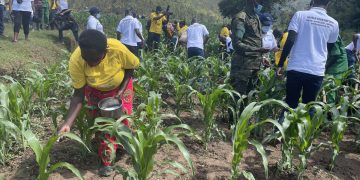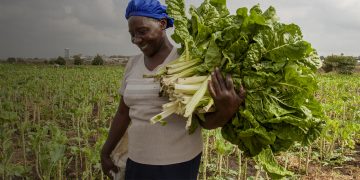A comprehensive package of nutrition education interventions in public primary schools can significantly improve dietary practices among adolescents. (The Lancet Child and Adolescent Health)
Rwanda’s food systems transformation: A diagnostic of the policy landscape shaping the transformation process
An inclusive and sustainable food systems transformation is a process of growth and development that is profitable for the full range of individual actors engaged in the system, beneficial for society including marginalized and vulnerable groups, and advantageous for the natural environment. This working paper provides a diagnostic of Rwanda’s food systems and the policy landscape that shapes it.
Expected impacts of increases in international prices of fertilizer in Rwanda: Estimates from a microsimulation
International fertilizer prices have increased rapidly since 2020 due to multiple factors. This note assesses the impact of these price increases on Rwanda’s agriculture sector, with an emphasis on implications for crop production, subsidy costs, and the Government of Rwanda’s agricultural budget.
Public investment prioritization for Rwanda’s inclusive agricultural transformation: Evidence from rural investment and policy analysis modeling
This study provides evidence that is designed to assist the Government of Rwanda in its selection of agricultural policy, investment, and expenditure portfolios that reflect the country’s broad focus on its food system and structural transformation. This process of prioritization will need to incorporate multiple public investments targeting multiple development outcomes and will need to be grounded in the cost-effective use of public resources in a largely market-led transformation process.
Public investment prioritization: Benefits of an increase in public spending on agriculture under PSTA4
Although public spending under the fourth Strategic Plan for the Transformation of Agriculture 2018– 2021 (PSTA 4) is generally well structured and cost-effective, funding has been largely stagnant— and even declining, when measured in constant prices—during PSTA’s first four years. This note summarizes the effects of a modest reallocation of public spending under PSTA 4 towards greater cost-effectiveness, as well as a modest increase in PSTA 4 spending.




